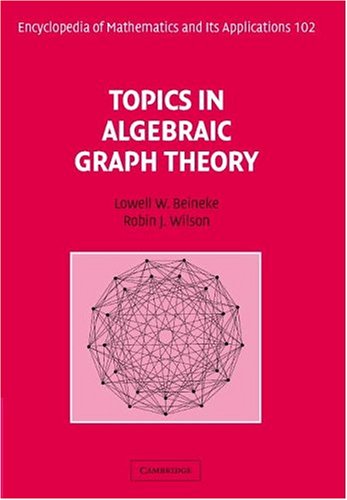

Most ebook files are in PDF format, so you can easily read them using various software such as Foxit Reader or directly on the Google Chrome browser.
Some ebook files are released by publishers in other formats such as .awz, .mobi, .epub, .fb2, etc. You may need to install specific software to read these formats on mobile/PC, such as Calibre.
Please read the tutorial at this link: https://ebookbell.com/faq
We offer FREE conversion to the popular formats you request; however, this may take some time. Therefore, right after payment, please email us, and we will try to provide the service as quickly as possible.
For some exceptional file formats or broken links (if any), please refrain from opening any disputes. Instead, email us first, and we will try to assist within a maximum of 6 hours.
EbookBell Team

0.0
0 reviews[2 pages per pdf page]
Main subject categories: • Graph theory • Algebraic graph theoryThe rapidly expanding area of algebraic graph theory uses two different branches of algebra to explore various aspects of graph theory: linear algebra (for spectral theory) and group theory (for studying graph symmetry). These areas have links with other areas of mathematics, such as logic and harmonic analysis, and are increasingly being used in such areas as computer networks where symmetry is an important feature. Other books cover portions of this material, but this book is unusual in covering both of these aspects and there are no other books with such a wide scope. Peter J. Cameron, internationally recognized for his substantial contributions to the area, served as academic consultant for this volume, and the result is ten expository chapters written by acknowledged international experts in the field. Their well-written contributions have been carefully edited to enhance readability and to standardize the chapter structure, terminology and notation throughout the book. To help the reader, there is an extensive introductory chapter that covers the basic background material in graph theory, linear algebra and group theory. Each chapter concludes with an extensive list of references.